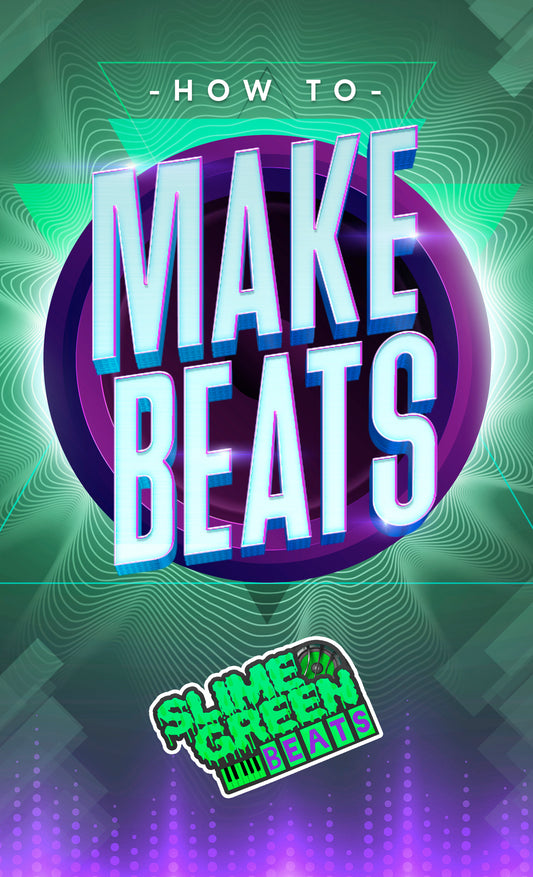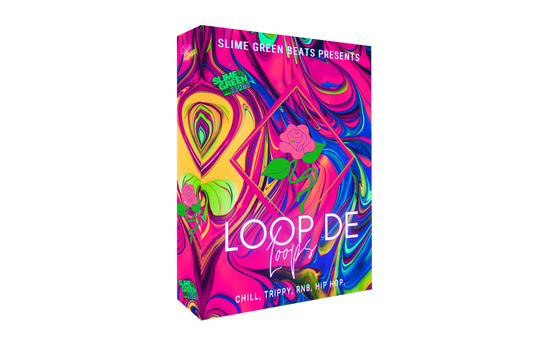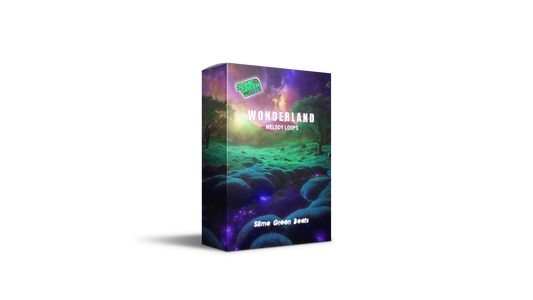Crafting a demo that catches a label's ear is no small feat. It's not just about the music—though that's a big part—but also how you present it. From ensuring your track is polished to picking the right label, every step counts. It's like dating: first impressions matter, and you need to show that you're a good fit. Labels get tons of demos, so you have to make yours stand out. Here's how you can make sure your demo doesn't end up in the trash bin.
Key Takeaways
- Make sure your demo is polished and ready for release before sending it.
- Choose a label that aligns with your music style and vision.
- Personalize your approach when contacting labels; avoid mass emails.
- Craft a compelling email with a strong subject line to grab attention.
- Use social media to build a following and engage with your audience.
Why Your Demo Sounds Like a Cat Stuck in a Blender
The Art of Not Sounding Like a Dying Animal
Ever hit play on your demo and wondered why it sounds like a cat in a blender? Yeah, we’ve all been there. The key is not just about having a great melody but making sure your track doesn’t sound like an audio crime scene. Nailing the basics is more important than you might think. Start with a clean recording—one without background noise that makes you question your life choices.
Mixing: Not Just for Pancakes
Mixing is an art, not just a fancy term for stirring pancake batter. It's about balancing the elements in your track so they don't clash like a bad family reunion. Think of your track as a delicate ecosystem. Each instrument needs its space to breathe. Avoid the temptation to crank everything up to 11. Remember, subtlety is your friend here. Gain staging is crucial to keep your levels in check—trust me, it makes a world of difference.
Mastering: Because Your Track Deserves a Crown
Mastering is like giving your track a royal crown—it’s the final polish that makes it shine. It’s not about making it louder; it’s about making it sound complete. This step ensures your track sounds good on every device, whether it's a high-end sound system or your mom's old car radio. So don’t skip it. Invest time in learning the basics or hire someone who knows their stuff. Your demo should scream "I'm ready for the world," not "I'm still figuring this out."
Your demo is your calling card. Make sure it’s the best representation of your music, not just a rough draft of what you hope it could be.
How to Avoid the 'Dear Sir/Madam' Demo Disaster
Personalize or Perish
So, you've got this killer track and you're ready to send it out to labels. But wait, are you about to start your email with "Dear Sir/Madam"? Stop right there! This is the email equivalent of shouting into a void. Labels get tons of demos, and the ones that start with a generic greeting are the first to hit the trash. Do a little digging to find out who you're actually emailing. If you can’t find a name, at least use the label's name. It’s like dating; you wouldn’t start a date with “Hey, human,” would you?
The Curse of the Copy-Paste
Ever received a text that was clearly meant for someone else? Awkward, right? Now imagine a label getting a demo email that feels like it was sent to a hundred others. Labels can smell a copy-paste job from a mile away. Personalizing your email shows that you actually care where your music ends up. It's not just about changing the name at the top; mention something specific about the label or an artist they represent. This little effort can make a big difference.
Why Labels Hate Mass Emails More Than Mondays
Mass emails are like spam calls at dinner time—annoying and unwelcome. Labels hate them because they scream "I don't care about you, just listen to my music!" If you want your demo to stand out, treat each submission like it’s the only one you’re sending. Yes, it takes more time, but the results can be worth it. And remember, never, ever CC or BCC multiple labels in one go. That's a surefire way to end up in the junk folder faster than you can say "unsubscribe."
Crafting a great demo email isn't rocket science, but it does require a bit of thought and care. Think of it as your first impression—make it count, or risk being forgotten.
Choosing the Right Label: It's Like Dating, But Less Awkward
Swipe Right on the Right Label
Picking the right label is like finding the right partner on a dating app. You don’t just swipe right on everyone and hope for the best. Instead, you need to be strategic. Start by targeting local record labels in your area or nearest major city. This can help you establish connections and increase your chances of getting noticed.
Stalking Labels: The Healthy Kind
Before you send your demo, become a detective. Check out the label’s previous releases and see if your music fits their vibe. You wouldn’t wear a tuxedo to a beach party, right? Same goes for your tracks. Make sure your sound aligns with the label’s style. If they love indie pop and you’re all about heavy metal, it’s probably not a match made in heaven.
When Your Music is a Match Made in Heaven
Once you’ve found a label that feels right, it’s time to make your move. Be honest about why you think your music belongs with them, but don’t go overboard. No one likes a clingy partner. Mention any past successes subtly and keep your email short and sweet. Remember, it’s about quality over quantity. Sending your demo to every label under the sun won’t increase your chances. Instead, focus on a few that truly resonate with your style and sound.
The Secret Sauce to Making Labels Drool Over Your Demo

Crafting the Perfect Hook: Not Just for Pirates
You know how a pirate's hook grabs attention? Your song needs something just as catchy! The first few seconds of your demo should be like a siren's call, pulling the listener in and refusing to let go. Think about the most memorable songs you know. They all have that killer hook that sticks like gum on a shoe. Spend time on this part—it's your first impression, and you want it to be unforgettable.
Dynamics: The Rollercoaster Your Track Needs
Nobody wants to listen to a song that's as flat as a pancake. Your track should take the listener on a journey with highs, lows, and everything in between. Imagine your music as a rollercoaster ride, full of unexpected twists and turns. This keeps the listener engaged and eager to hear what's next. Dynamic range is what gives your track life, so don't be afraid to experiment.
Why Your Track Needs More Drama Than a Soap Opera
Drama isn't just for TV! Your track should be packed with emotional highs and lows. Think of it like adding spice to your favorite dish; without it, everything's bland. Build tension, create suspense, and then release it. It's the emotional rollercoaster that makes people hit repeat. Remember, in the world of music, being dramatic is a good thing!
The Email Etiquette That'll Get Your Demo Heard
Subject Lines That Scream 'Open Me!'
Alright, let's face it. Your email subject line is like the headline of your life story. If it's dull, nobody's going to read it. You need something that shouts, "Hey, check this out!" without sounding like a used car ad. Think of it as a mini-advertisement for your demo. Keep it short and sweet, like "New Track: Future Bass Extravaganza." Remember, labels get tons of emails, so make yours pop!
The Art of the Short and Sweet Email
Now, onto the email body. Nobody wants to scroll through a novel about your musical journey. Keep it concise. Start with a quick intro: "Hi, I'm Jake, a producer from NYC." Then, get to the point: "I've got a track I think would be perfect for your label." Mention any cool stuff you've done, like winning a remix contest or working with known artists. But seriously, keep it brief. No one needs your entire life story.
Attachments: The Bane of Every Label's Existence
Attachments are like those mystery meat dishes at a buffet—best avoided. Instead, use links to share your music. SoundCloud or Dropbox are your best pals here. Make sure your track is streamable and downloadable. And for the love of all things good, don’t send a WAV file. Labels will thank you for keeping their inboxes from exploding.
Crafting the perfect email is like making a good sandwich—layered, satisfying, and not too much of anything. Keep it balanced, and you'll have labels coming back for seconds.
Feedback: The Gift That Keeps on Giving (Even When It Hurts)
Why Your Mom's Opinion Doesn't Count
Let's face it, your mom thinks everything you do is incredible, even if it sounds like a cat stuck in a blender. Real feedback comes from folks who aren't afraid to tell you when your track needs a little more spice. So, while mom's praise is heartwarming, it's time to seek out opinions from people who know what they're talking about.
Finding Feedback That Won't Make You Cry
Criticism can sting, but it's essential for growth. Here’s how to find the right kind:
- Seek out peers who are in the music industry. They can provide insights that are both constructive and realistic.
- Join online forums or communities where musicians share their work and offer each other feedback.
- Consider hiring a professional service for a more detailed critique. Just be ready for some tough love.
Turning Criticism Into Chart-Topping Gold
So, you've got your feedback and maybe a bruised ego. Now what? Turn those critiques into action:
- List the key points of feedback and prioritize them. What's most important to address first?
- Experiment with changes and record different versions. Sometimes it takes a few tries to get it right.
- Don't be afraid to ask for a second round of feedback. It's like polishing a gem; it takes time and patience.
Remember, even the greatest hits started as rough demos. Embrace the feedback, learn from it, and let it shape your masterpiece.
And hey, if you're recording vocals at home, minimize distractions by using sound-absorbing materials and focusing on proper mic placement. Your tracks will thank you later!
Social Media: Your Not-So-Secret Weapon

Building a Following Without Losing Your Mind
Let's be real, social media can feel like a never-ending circus. But if you want your music to reach the masses, you gotta be in the ring. Start by picking the platforms where your fans hang out. Consistency is key—post regularly but don't spam. Share a mix of content: behind-the-scenes, live performances, and yes, even your morning coffee. People love that stuff.
Engagement: More Than Just Counting Likes
Engagement isn't just about racking up likes or hearts. It's about starting conversations. Ask your followers questions, respond to comments, and maybe even host a Q&A session. The more you interact, the more your fans will feel connected to you. And remember, a little humor goes a long way. Who doesn't love a good meme?
How to Make Your Cat a Viral Sensation
Okay, maybe not your cat, but quirky content can go viral. Think outside the box. Create challenges, collaborate with other artists, or even jump on trending hashtags. If you can make people laugh or think, you're on the right path. Speaking of trends, staying current with Instagram marketing for music can help you create unique hashtags that catch on like wildfire.
Social media isn't just a tool—it's your stage. Make sure your voice is loud and clear, and don't be afraid to show who you really are.
Social media is a powerful tool that can help you reach your goals. Whether you're an artist, a business, or just someone looking to connect, using social media effectively can make a big difference. Don't miss out on the chance to boost your presence online! Visit our website to discover how we can help you make the most of your social media strategy.
Highlight: "Social media is a powerful tool"
Wrapping It Up: The Demo Dance
So, there you have it, folks! Crafting the perfect demo is like trying to make the perfect sandwich—everyone's got their own secret sauce, but some basics just can't be ignored. Remember, labels are like that picky eater at the table; they want something that fits their taste but also has a little extra zing. So, make sure your track is polished, your emails are not spammy, and your links are virus-free. And hey, if you don't hear back, don't sweat it. Just keep making music, because at the end of the day, it's all about the groove. Now go out there and make some noise—just not too much noise, or you might scare the labels away! 🎵
Frequently Asked Questions
How do I make my demo sound professional?
First, make sure your music is well-mixed and mastered. This means balancing all the sounds and making sure nothing is too loud or too quiet. Think of mastering as putting a shiny finish on your track, just like polishing a trophy.
Why is personalizing my demo submission important?
Personalizing your demo shows the label that you care about them specifically. It's like writing a letter to a friend instead of sending a generic card to everyone.
How do I choose the right label for my music?
Research labels that fit your music style. It's like finding the right team for a sport – you want to be with people who understand and appreciate your style.
What's the best way to get my demo noticed by a label?
Craft a catchy hook and make sure your track has dynamics, like a rollercoaster ride. Use a subject line in your email that grabs attention and keep your message short and sweet.
Why should I avoid sending mass emails to labels?
Mass emails often get deleted because they seem impersonal, like junk mail. Labels want to feel special, not like they're just one of many.
How can I use social media to promote my demo?
Build a following by sharing your music journey and engaging with your audience. Think of it as inviting people into your world and showing them what makes your music unique.








